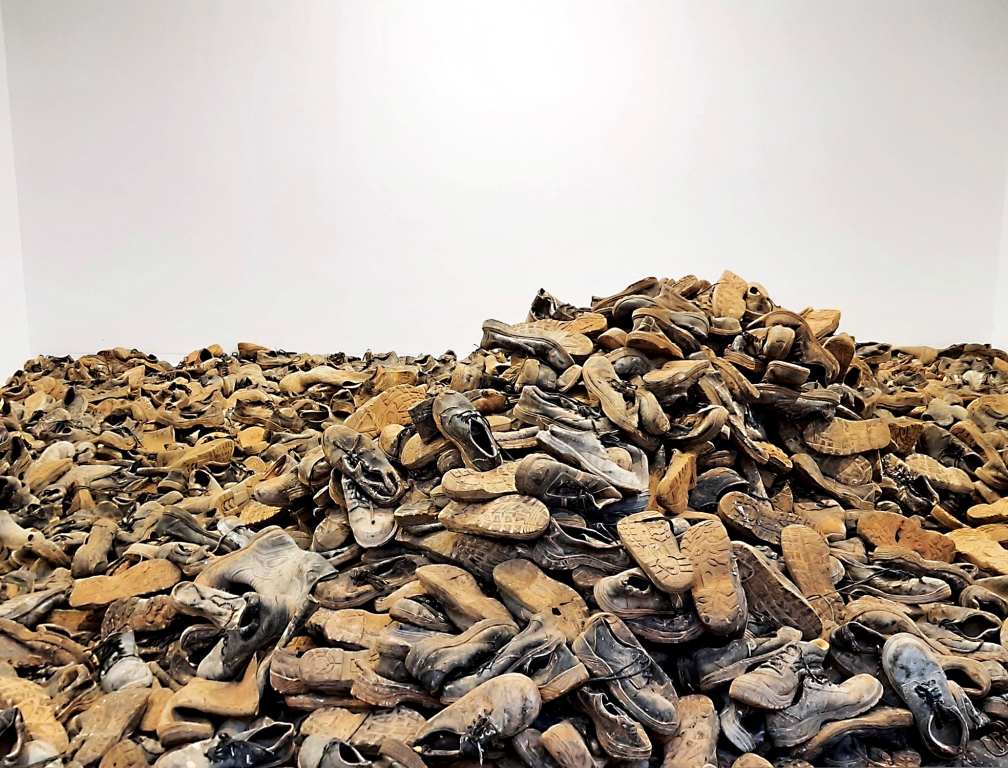Delhi
A TEMPORARY MUSEUM OF OUR TIMES AND IDEAS
Dhritabrata Bhattacharjya Tato
‘Permitted’ and ‘prohibited’ are two sides of the same coin. They switch over from one side to the other with the change of location – both politcal and geographic. CONTRABANNED: Provocations of Our Times comes at the opportune momentof India’s recent negociations of what is permitted and what is prohibited within the confine of its territorry. In a sense, artworks of this exhibition are smuggled in inside a space that boldly questions prevalent ideas that have cropped up to the fore in recent times. Although, the provocation is a common thread between all artworks, but their locations are varied: gender, politics, gastronomy, identity to name a few.
The Republic of Indian Unionoffers a large landscape to claim any of these locations. Now, it is world’s largest democary thanks to its demography. At the time of its creation it had a population of around 36 crores (1951 census). That 36 crores is now nearing 136 crores. India manged to leapfrog its population in last 70 years, that it could not achieve in any other segment. Plato left his bookRepublic for the world to ponder upon, the French underwent a bloody revolution to achieve its Republique status, while India received it as a gift from its colonisers. 136 crores of people unknowingly and unconsciously inherited a politcal modelwith over 2000 years of historybut perhaps without a reality. As a result, the very basis of Indian constitution, today, risks to be defeated by its own people for they often trespasss the zone of individual existsence in the name of religion, ritual or rumours. Having any autocratic regime is perhaps the cherry on the cake that makes such extra-constitutional violence look prettier and legitimate. That’s why curator Myna Mukherjee writes in her curatorial notes, ‘[…] we wonder if the hitherto synonymous ‘democracy’ and ‘republic’ stand at opposite ends of a polarized spectrum.’
From this premise, Contra-banned is an aggregate of contemplative art works that imbibes strong quotients of dissent but risked to be wiped out by the robust machinery of the state and the media. But Art is always the little kid who dares to say the king is naked! Sharmila Samant’s work Brokerage is a glass gavelthat hints at the fagility of the authority ofthe Nation-State. It also reminds us of the legitimacy of the ‘legal system’ very much like Jacek proved through his execution in the 1988 film A Short Film About Killing directed by Krzystof Kieślowski.
In the prelude of Ministry of Utmost Happiness, Arundhuti Roy writes how cows are turned into a milking unit by the very social group that claims to protect it. The multi-layered cut-outs with metal pipes of Gargi Chandola and Yaman Navalakha illustrtaes the same concern.
Cultural relativism and sub-altern studies taught us to recontextualize historiography of the marginaliged people. However, the mode of life of such magrinalised people demand a critical examination and social scruitny particularly during our times. In India, civilisationally untenable thoughts of so-called marginaliged are taking the centre stage empowered by the demography. Or center itself is absent and the margins become the centre. Anindita Bhattacharya’s neo-miniatures both iconizes yet obliterates the very miniature and mythological heritage. Her margins are greater than the centre which empty. Her fine works bring in a bunch of subtle marginal subjects which still fails to become prominent in our quotidien discourse.
Perhaps the makers of India proposed a very high standard of freedom and power to its people that has to beachieved in due course. Therefore CONTRA-BANNED becomes a temporary museum of our times and ideas that revolve around nationalism, cesnsorship and repressive society.

